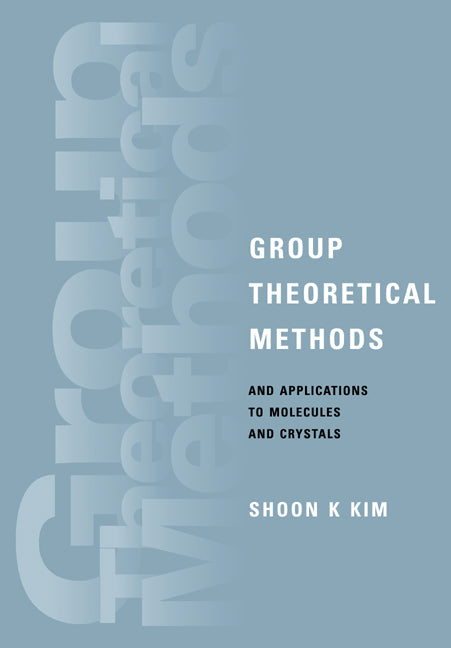Freshly Printed - allow 8 days lead
Couldn't load pickup availability
Group Theoretical Methods and Applications to Molecules and Crystals
From the pioneering author in the field, this book is ideal for condensed matter physicists and physical chemists.
Shoon K. Kim (Author)
9780521020381, Cambridge University Press
Paperback / softback, published 29 September 2005
512 pages, 69 b/w illus. 41 tables
24.4 x 17 x 2.6 cm, 0.796 kg
'The author's unique approach and methods which are developed in this book to discuss space groups and their matrix representations, try to overcome the abstract nature of the classical group theoretical methods. In this perspective, and as illustrated in this monograph, this work aims to close the gap between the abstract mathematical theory of space groups and its concrete applications in other sciences.' Wim Malfait, Zentralblatt für Mathematik
This book explains the basic aspects of symmetry groups as applied to problems in physics and chemistry using an approach pioneered and developed by the author. The symmetry groups and their representations are worked out explicitly, eliminating the undue abstract nature of group theoretical methods. The author has systemized the wealth of knowledge on symmetry groups that has accumulated in the century since Fedrov discovered the 230 space groups. All space groups, unitary as well as antiunitary, are reconstructed based on the algebraic defining relations of the point groups. This work will be of great interest to graduate students and professionals in solid state physics, chemistry, mathematics, geology and those who are interested in magnetic crystal structures.
Preface
List of symbols
1. Linear transformations
2. Theory of matrix transformations
3. Elements of abstract group theory
4. Unitary and orthogonal groups
5. The point groups of finite order
6. Theory of group representations
7. Construction of symmetry adapted linear combinations based on the correspondence theorem
8. Subduced and induced representations
9. Elements of continuous groups
10. The representations of the rotation group
11. Single- and double-valued representations of point groups
12. Projective representations
13. 230 space groups
14. The representations of space groups
15. The unirreps of the space groups to energy bands and vibrational modes of crystals
16. Time reversal, antiunitary point groups and their core presentations
17. Antiunitary space groups and their core presentations
Appendix. Character tables for the crystal point groups
References.
Subject Areas: Crystallography [PNT], Physical chemistry [PNR], Condensed matter physics [liquid state & solid state physics PHFC]


